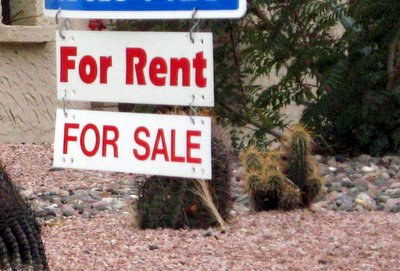Photo credit: Phil Sexton
There’s been a big rush over the last few years by big companies to buy up large numbers of single-family homes, homes which eventually were converted over to rentals. The big question is: are these companies in it for the long haul or are they looking to get in, make quick profits and get out? Freddie Mac’s latest issue of Insight & Outlook posits that there are good indications it may be the former.
Back in 1996, a survey found that 75 percent of single-family detached rentals were owned by individuals and partnerships which held fewer than 10 units, hence the assumption that landlording this type of housing product is mostly a sideline business.
Up until the Great Recession, the number of single-family detached rental units did not make up a big part of the market, with 10 million units during the boom, but climbing rapidly to 14 million units or 35 percent of the market, with the coming of the recession.
Freddie Mac says that the single-family detached (SFD) rental model started showing up in 2012 when a small number of private equity-backed large investors started accumulating portfolios of SFDs with the intention of converting them to rentals and managing them.
The business model of these buy-to-rent (B2R) companies were different from the typical multi-family management companies. Operating costs are different between the two rental property types. SFD property management costs are higher due to geographically spread out properties and non-standardized appliances and amenities; but SFD properties’ low prices offset the higher operating costs. With demand increasing for rentals, especially SFD rentals, this paved the way for the emergence of B2R companies.
Home prices have rebounded since the Great Recession and with this, one of the main motivations for B2R firms to remain in this niche market. Will SFDs be proven to be more of a temporary phenomenon because their numbers rose in a market environment of much lower home prices, or do they signal a cultural shift from wanting to purchase a home to rentals? There are not a shortage of articles about the decline in home-ownership and how many millennial lifestyle choices and financial obligations are a big part of this trend. If the B2R companies can manage many SFDs efficiently, then large-scale B2R may see more growth and longevity.
A recent study cited by Freddie Mac which analyzed the business models of the eight largest B2R companies between 2012 and 2014. SFDs were only considered and all purchasers of SFDs were divided into groups based on the number of homes bought in one year. The study found that a small percentage of the single-family market were B2R and the eight largest B2R companies purchased $16 billion worth of properties and never exceeded more than two percent of market share in any year.
In the beginning, the eight largest B2R firms bought a higher percentage of distressed properties, a third of bought properties were distressed in 2012, about half were in 2013, with each year afterwards, an increasing share of properties were non-distressed compared to other investors. Lender-owned properties were also a smaller share of their portfolios (as opposed to short sales and foreclosures) when compared to other large investors. The big B2R companies spent more on repairs and renovations, averaging 20 percent of the unit’s purchase price and the homes were on smaller lots, newer and larger than the properties purchased by other large investors.
With reduced yard maintenance because of the smaller lot, the family-friendly larger square footage and the less need for repairs and/ or renovation that comes with a newer home, this makes the B2R business model more sustainable and is indicative of a longer-term strategy. The B2R companies focused on purchasing in a few metro areas, especially in the southeast and in 2013, particularly metro Atlanta, where 12 percent of all single-family purchases were B2Rs.
Freddie Mac’s conclusion is that the emerging large-scale B2R companies potentially represents a new aspect of the single-family rental market. “While the data is mixed, there are some signs that large-scale firms intend to manage their large portfolios of single-family rentals as an on-going business.”
Source:
Mortgage News Daily. Buy-to-Rent: Business Model or Quick Profit Plan?


